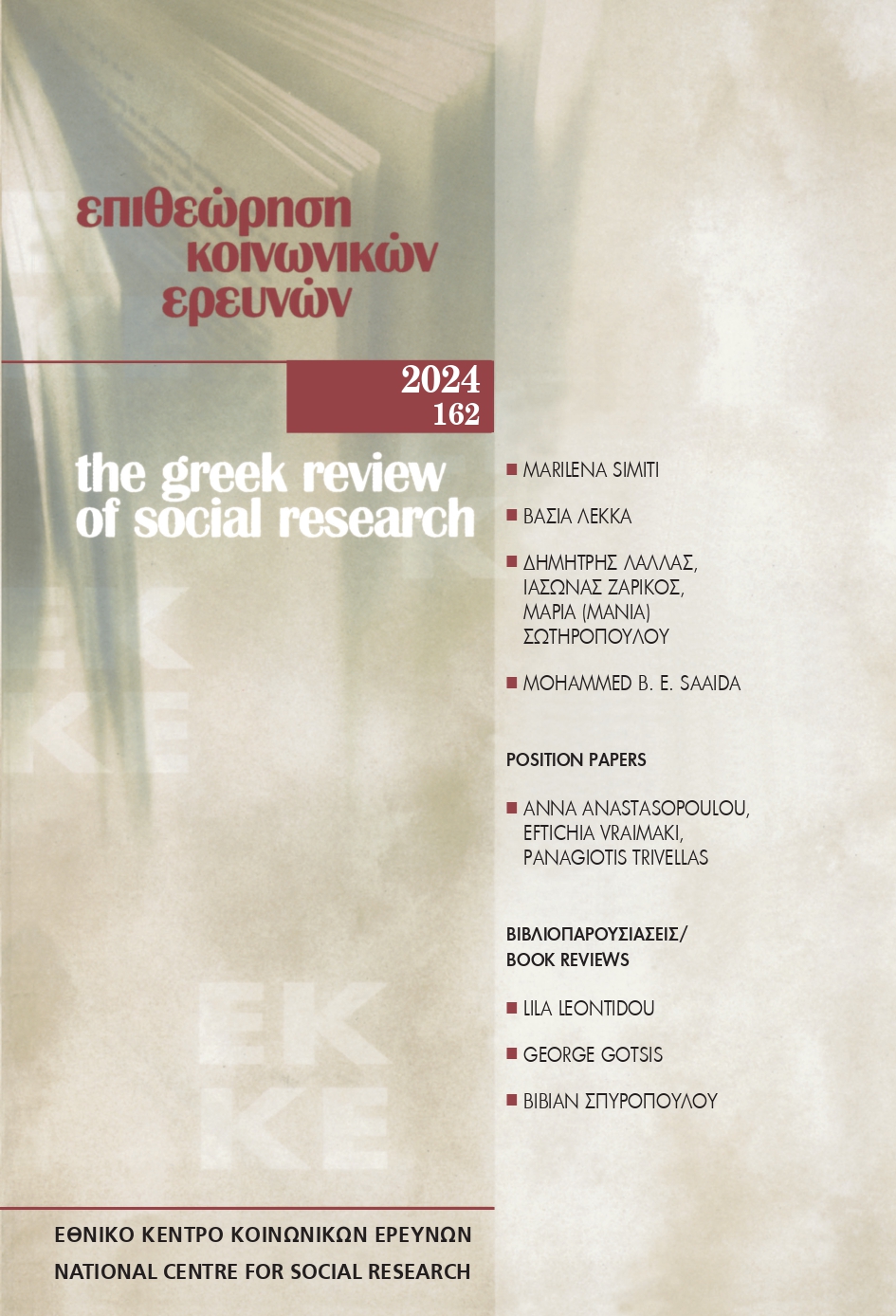Παιδιά με Διαταραχή Ελλειμματικής Προσοχής/Υπερκινητικότητας: Κανονικοποιώντας την παιδική ηλικία στις σύγχρονες βιοπολιτικές κοινωνίες

Περίληψη
Το παρόν άρθρο εξετάζει την επίμονη και διαρκώς αυξανόμενη παρουσία της διάγνωσης της ΔΕΠΥ στα παιδιά των δυτικών κοινωνιών και την απόπειρα κανονικοποίησης της παιδικής ηλικίας. Με αφετηρία τη φουκωική σκέψη και τα εργαλεία της νέας κοινωνιολογίας της παιδικής ηλικίας, σκοπός είναι η σκιαγράφηση των επιπτώσεων τής εν λόγω διάγνωσης αναφορικά με την ίδια την έννοια του «παιδιού» και με το τι αξιολογείται και συγκροτείται ως «κανονική» και ως «παθολογική» παιδική ηλικία και, συνακόλουθα, αναφορικά με τη συγκρότηση νέων μορφών ταυτοτήτων και νέων μορφών υποκειμενοποίησης των παιδιών στις βιοπολιτικές κοινωνίες των αρχών του 21ου αιώνα.
Λεπτομέρειες άρθρου
- Πώς να δημιουργήσετε Αναφορές
-
Λέκκα Β. (2024). Παιδιά με Διαταραχή Ελλειμματικής Προσοχής/Υπερκινητικότητας: Κανονικοποιώντας την παιδική ηλικία στις σύγχρονες βιοπολιτικές κοινωνίες. Επιθεώρηση Κοινωνικών Ερευνών, 162, 29–56. https://doi.org/10.12681/grsr.36708
- Τεύχος
- 2024: 162
- Ενότητα
- Άρθρα

Αυτή η εργασία είναι αδειοδοτημένη υπό το CC Αναφορά Δημιουργού – Μη Εμπορική Χρήση 4.0.
Οι συγγραφείς των άρθρων που δημοσιεύονται στην Επιθεώρηση Κοινωνικών Ερευνών διατηρούν τα δικαιώματα πνευματικής ιδιοκτησίας επί των άρθρων τους, δίνοντας στο περιοδικό το δικαίωμα της πρώτης δημοσίευσης. Άρθρα που δημοσιεύονται στην Επιθεώρηση Κοινωνικών Ερευνών διατίθενται με άδεια Creative Commons 4.0 και σύμφωνα με την άδεια μπορούν να χρησιμοποιούνται ελεύθερα, με αναφορά στο/στη συγγραφέα και στην πρώτη δημοσίευση για μη κερδοσκοπικούς σκοπούς.
Το Εθνικό Κέντρο Κοινωνικών Ερευνών διατηρεί το δικαίωμα να δημοσιεύει, να αναπαραγάγει, να παρουσιάζει στο κοινό, να διανέμει και χρησιμοποιεί άρθρα που δημοσιεύονται στην Επιθεώρηση Κοινωνικών Ερευνών σε οποιοδήποτε μέσο και μορφή είτε μεμονωμένα είτε ως μέρη συλλογικών έργων, για όλο τον χρόνο διάρκειας προστασίας της πνευματικής ιδιοκτησίας και για όλες τις χώρες του κόσμου. Αυτό περιλαμβάνει ενδεικτικά και όχι αποκλειστικά το δικαίωμα δημοσίευσης των άρθρων σε τεύχη της Επιθεώρησης Κοινωνικών Ερευνών, αναπαραγωγής και διανομής μεμονωμένων αντιγράφων των άρθρων, αναπαραγωγής ολόκληρων των άρθρων σε άλλη έκδοση του Εθνικού Κέντρου Κοινωνικών Ερευνών, καθώς και αναπαραγωγής και διανομής των άρθρων ή περίληψης αυτών με χρήση πληροφορικού συστήματος αποθετηρίου.


